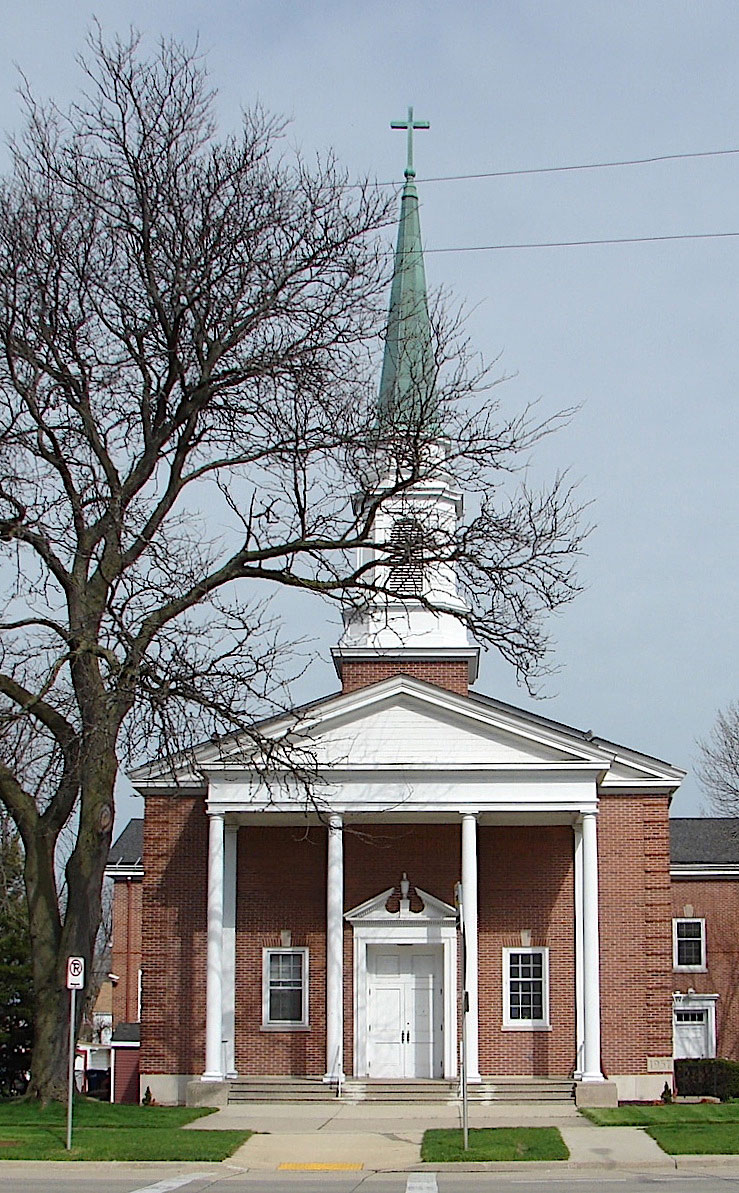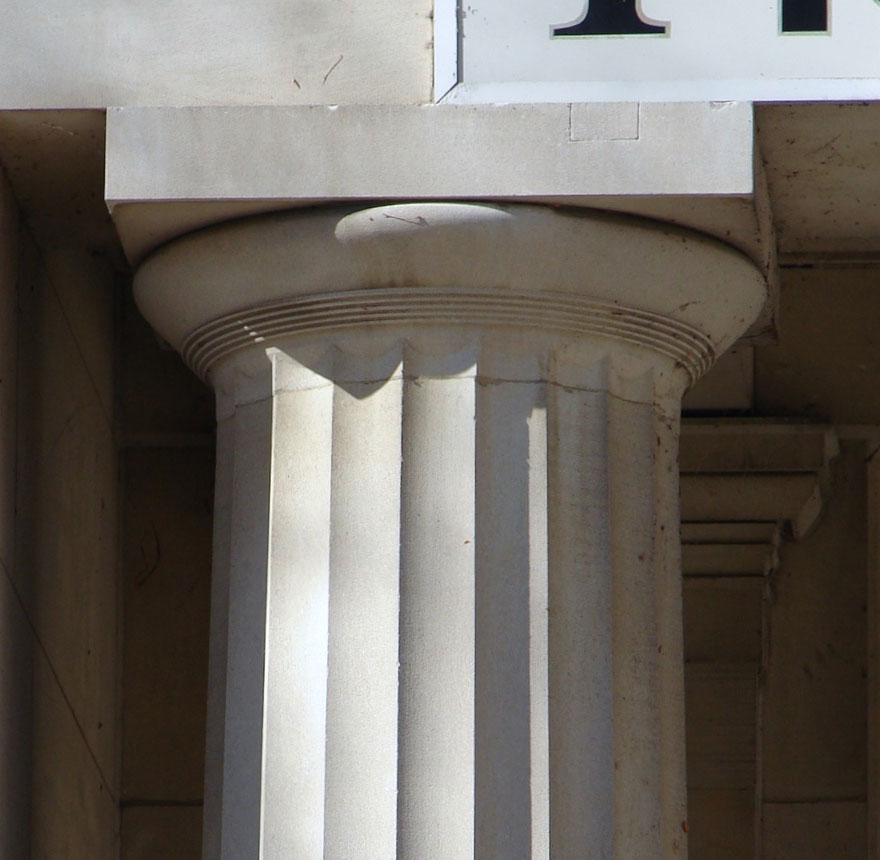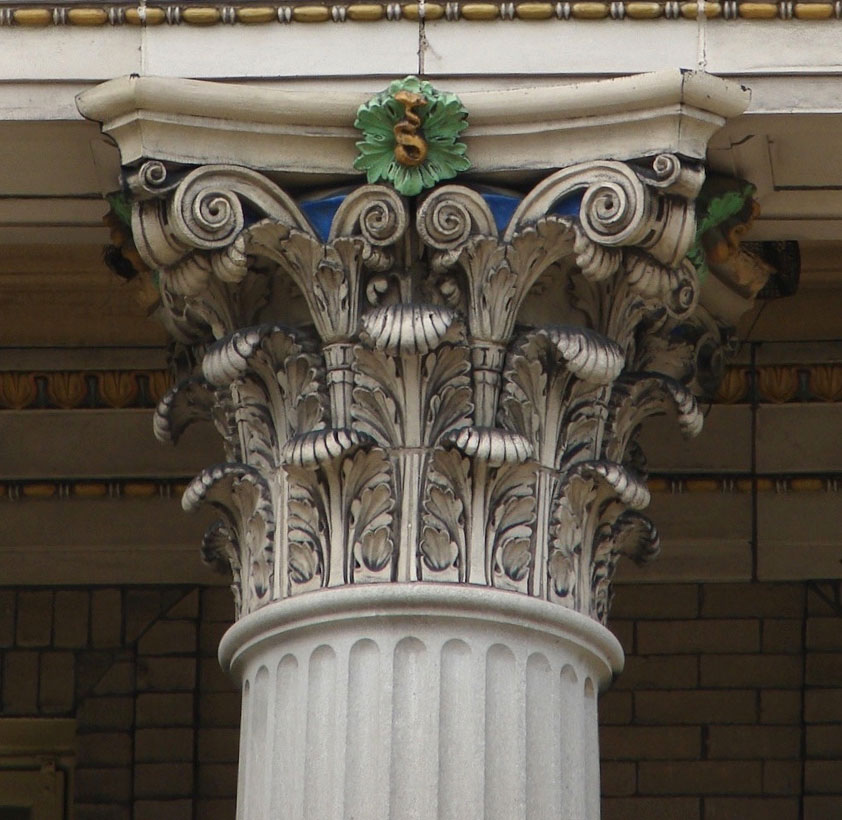Classical Tradition
Greek and Roman Architecture
The classical tradition is not an architectural style, but a succession of styles that begins with the architecture of the ancient Greeks, and in particular the temples built
to honor their various gods. Most of the surviving Greek temples date from the sixth to the fourth centuries BC and share several characteristics. The common temple form includes
columns on the façade and often on all four sides of the building, a gable roof of relatively low pitch, and a triangular pediment on the gabled façade. The Greeks used three types
of columns for their temples. In order of increasing complexity, they are the Doric, Ionic, and Corinthian. These column types are known as the Greek orders or classical orders, with
each order having its own system of proportions. The Parthenon in Athens, a Doric temple built in the fifth century BC, is the best known of the Greek temples and is one of the most
influential buildings in the history of Western architecture.
Following the Greeks, the Romans continued to build temples and other buildings in the Greek manner, with some innovations. The Romans invented two new orders, the Tuscan and Composite (a combination of the Ionic and Corinthian), and incorporated arches and domes into their buildings. The arch and dome originated in Mesopotamia, but the Romans imported the knowledge and technology for their construction, making widespread use of the dome from the first century AD. The Roman Empire spread much of this style of building across Europe and the Near East. The Pantheon in Rome, constructed early in the second century, has served as the model for many later domed buildings of the classical tradition.
Later Classical Styles in Europe
After a dormant period of nearly a thousand years, following the decline of the Roman Empire and the ensuing Middle Ages, classical architecture returned to Europe with the Renaissance of the fifteenth to seventeenth centuries. From its origins in Florence, the Renaissance spread throughout Italy and then across Europe, bringing with it a renewed interest in the forms and details of ancient Greek and Roman buildings. This was the first instance of a deliberate revival, rather than a continuation or evolution, of the classical styles.
Renaissance architecture evolved into the more exuberant Baroque from the late sixteenth century. Baroque buildings display more complex forms and more ornamented surfaces. Elliptical rather than circular forms were sometimes used for room shapes as well as windows, arches, ceiling vaults, and domes. Building components were often exaggerated in scale, as with colossal columns several stories in height. Facades not only have more ornament, but often greater depth than those of Renaissance buildings, with receding and projecting surfaces and more boldly projecting pilasters. At the same time, the Baroque continued many characteristics of the Renaissance and earlier Roman and Greek styles, including symmetrical façade compositions, smooth rather than textured or rock-faced masonry, and the use of the classical orders. One of the most notable religious buildings of the period is St. Peter’s Basilica in the Vatican. Built over the course of more than one hundred years, from 1506 to 1626, this church has characteristics of both the Renaissance and Baroque styles. It has contributed more than any other building to the popularity of the classical styles for Catholic churches.
The Classical Tradition in America
From the early days of the English colonies in North America, architects designed buildings in a succession of classical styles. These range from the Georgian (dating from the early eighteenth century and named for kings George I through George IV), to the Federal (from shortly after the American Revolution into the early nineteenth century), to the Greek Revival (from the early to mid-nineteenth century). Each of these styles corresponds to parallel trends in England and to some extent elsewhere in Europe. The Federal style, for example, is called Adamesque in the British Isles, after the Scottish architects and interior designers Robert and James Adam. Many examples of these styles still exist in the Atlantic Coast states, with the later Greek Revival eventually reaching all the way to the West Coast.
Architects revived the Georgian and Federal styles in the late nineteenth century under the broad heading of “Colonial Revival,” often combining elements from these two earlier styles. The revival began at the time of the United States Centennial Exhibition in Philadelphia in 1876, and achieved long-lasting popularity due to its patriotic associations. While Colonial Revival houses were often built of wood, dark red brick was the most common exterior material for larger buildings, matching the color of the brick commonly seen on Georgian and Federal style buildings. Wooden elements, including doors, windows, and cornices, were typically painted white. Other features of these earlier styles that often appear on Colonial Revival buildings include windows divided into numerous small rectangular panes, quoins (slightly projecting blocks of brick or stone forming a building’s corners), and broken pediments. The Colonial Revival is the most enduring of the historical revival styles in the United States, remaining popular into the post-World War II period and occasionally used even into the present century.

The Classical Tradition in Milwaukee
The classical styles have traditionally been used for all types of buildings and are not primarily ecclesiastical styles. Notable government and business buildings in Milwaukee of classical design include the Central Library (1897), the Northwestern Mutual Life Building on East Wisconsin Avenue (1914), and the Milwaukee County Courthouse (1931). Of the more than 300 places of worship in Milwaukee that were built before 1970, just 26 are in the classical styles. Of these, ten are Catholic churches, including all six of the surviving nineteenth century churches of classical design.
In addition to the Catholic Church, the Christian Science Church has exhibited for many years a strong affinity for the classical styles. The denomination’s mother church in Boston began as a Romanesque Revival design, completed in 1894. In 1904-06, the church constructed an addition that dwarfs the original building. The addition is a Renaissance Revival design with a large dome and an auditorium that can accommodate up to 5,000 people. Since the time of its completion, the classical styles have been preferred for Christian Science churches across the United States, although other styles were sometimes used. The earliest Christian Science church in Milwaukee is a Gothic Revival building that dates to 1902, predating the enlargement of the Boston church. The Christian Science Church subsequently built five more places of worship in the city, dating from 1907 to 1950, all in variations of the classical styles.
Milwaukee’s three oldest surviving churches, St. Mary’s Catholic, St. John’s Catholic Cathedral, and Holy Trinity Catholic (now Our Lady of Guadalupe Catholic), have been described as Zopfstil. The word refers to a German architectural style of the late eighteenth and early nineteenth centuries that was a reaction to the excesses of the Baroque. It is roughly contemporary with the Federal and Greek Revival styles in the United States. Milwaukee has historically been the nation’s most German large city, and may be the only city in the United States (with the possible exception of Cincinnati) where this German word is used at all. In other cities, buildings of similar design are more likely to be described as Greek Revival, Renaissance Revival, or simply neoclassical.
Almost half of Milwaukee’s classical style churches and synagogues are Colonial Revival designs, or are more generically classical but with some Colonial Revival characteristics. The Colonial Revival is the only one of the historical revival styles that continued to be used for religious buildings after the 1950s. (In comparison, the city’s last Romanesque Revival church was built in 1942, and the last Gothic Revival church dates to 1958.) St. Paul’s Catholic Church is a Colonial Revival design built in the early 1970s. Greater St. Luke Missionary Baptist, built in the first decade of the present century, has a pediment supported by columns at the entrance and a Colonial Revival steeple. Those two features, along with the dark red brick, serve to associate this otherwise thoroughly modern building with a longstanding American architectural tradition.
The buildings profiled in this chapter include eight Catholic churches and three that were originally built as Christian Science churches. Also included are one Baptist church and one former synagogue. In addition to the three Zopfstil churches, these include buildings based on Renaissance and Baroque styles as well as Colonial Revival designs.




